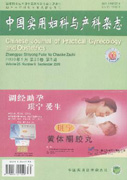Abstract: Objective To investigate the fine structure of cervical cancer, in order to elucidate tissue components. Methods Thirty-three fresh specimens of cervical cancer were collected from cervical biopsy and radical hysterectomy from June to October 2014 at Nanfang Hospital, and were used for qualitative research by HE staining, special staining and a variety of immunohistochemical staining. Results 1.In addition to lots of cancer cells with different differentiation, cervical cancer was rich in fibrous connective tissue, including collagen and elastic fibers, no muscle fiber; it also contained a lot of blood vessels, including microvascular vessels;it contained many lymphatic vessels, no lymph nodes; lymphatic and vascular invasion was found in a part of cervical cancer. 2. In addition to the basic structure, nerve fibers were found in some cervical cancer. (1) The positive cases of nerve-specific marker S-100 were 14 and the ratio was 42.42%.(2) The positive cases of sympathetic nerve-specific marker TH were 7, with the ratio of S-100 positive cases in 50%. The positive cases of parasympathetic nerve-specific marker VIP were 5, with the ratio of S-100 positive cases in 35.71%. (3) The positive cases of newborn nerve-specific marker GAP-43 were 11, with the S-100 positive in 78.57%. Conclusion In addition to the basic structure of the cancer cells, fibrous connective tissue, blood vessels and lymphatic vessels, cervical cancer also contains nerve fibers, and most of the nerve fibers are newborn nerve,with the content of sympathetic nerve slightly higher than parasympathetic nerve.

